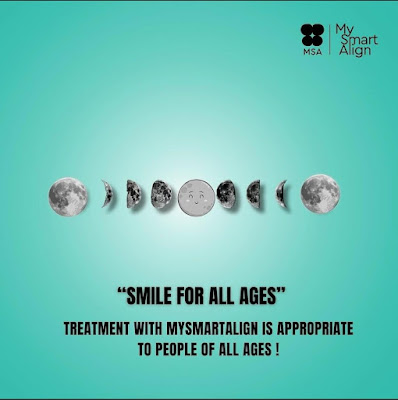Invisible Aligners vs Braces: Which is Right for You?🤔
When it comes to achieving a perfect smile and straightening your teeth, two popular orthodontic options are clear aligners and braces. Both treatments offer unique benefits tailored to different needs and lifestyles. Let’s break down the differences to help you decide which solution suits you best.
.png) |
| Aligners VS Braces😁 |
💨1. Appearance
- Clear Aligners: Virtually invisible and crafted from medical-grade transparent plastic, clear aligners are ideal for those seeking a subtle orthodontic solution. Adults and teens often prefer them for their discreet appearance.
- Braces: Traditional metal braces are more visible but have advanced options like ceramic braces (tooth-colored) or lingual braces (placed behind the teeth) for a less noticeable look. These alternatives blend better with your teeth but are not as invisible as aligners.
💨2. Comfort
- Clear Aligners: Made from smooth plastic, aligners are generally more comfortable and less likely to irritate your cheeks or gums. They eliminate the risk of wire pokes or bracket-related discomfort.
- Braces: Metal brackets and wires can occasionally cause irritation, especially after adjustments. Sores or discomfort in the cheeks and gums may occur during the treatment process.
💨3. Treatment Duration
- Clear Aligners: These are often faster for addressing mild to moderate alignment issues, with treatment typically lasting 6–18 months.
- Braces: Braces are more effective for complex dental corrections but may require 18 months to 3 years to achieve optimal results.
💨4. Maintenance and Hygiene
- Clear Aligners: Since aligners are removable, brushing and flossing remain straightforward, allowing you to maintain excellent oral hygiene. However, aligners need separate cleaning and should be worn for 20–22 hours daily to be effective.
- Braces: Fixed braces require more effort to maintain oral hygiene. Food particles can get stuck in the brackets and wires, making thorough cleaning essential to avoid plaque buildup and cavities.
💨5. Effectiveness
- Clear Aligners: Perfect for treating mild to moderate alignment issues like spacing or minor crowding. However, they may not be suitable for severe bite problems or jaw misalignments.
- Braces: Highly effective for all dental corrections, including severe crowding, bite alignment, and jaw adjustments. Braces remain the gold standard for complex orthodontic cases.
💨6. Lifestyle Impact
- Clear Aligners: With aligners, you can enjoy more dietary freedom as they are removable during meals. However, avoid consuming colored drinks like coffee or tea while wearing them to prevent staining.
- Braces: Braces require dietary adjustments. Sticky, hard, or crunchy foods (like caramel or nuts) should be avoided to prevent damage to the brackets and wires.
💨7. Regular Check-Ups
- Clear Aligners: Require fewer in-person visits, as many brands offer remote monitoring through apps or virtual consultations. This makes aligners convenient for busy schedules.
- Braces: Regular orthodontic appointments every 4–6 weeks are necessary for adjustments and progress checks.
Conclusion💬
Both clear aligners and braces are effective solutions for teeth straightening, but the best choice depends on your dental needs and personal preferences:
- Choose clear aligners if you value a discreet, flexible option for mild to moderate alignment issues.
- Opt for braces if you need comprehensive correction for complex dental problems.
To make the right choice, consult a trusted orthodontist who can evaluate your dental health, lifestyle, and budget. With professional guidance, you’ll be one step closer to a confident, radiant smile!
For more information about clear Aligner

super
ReplyDelete